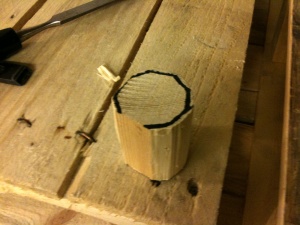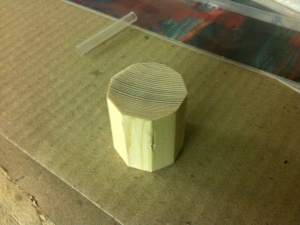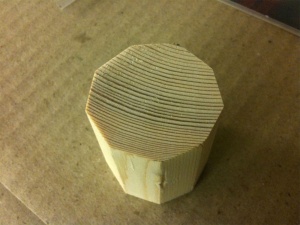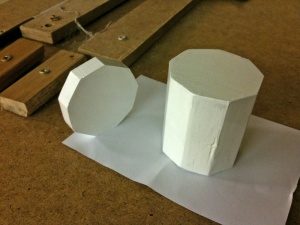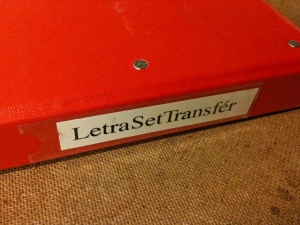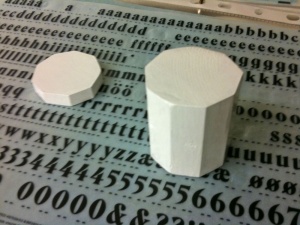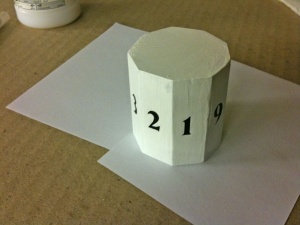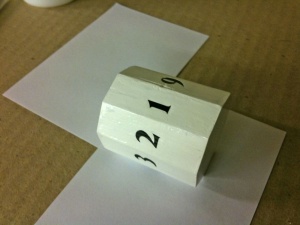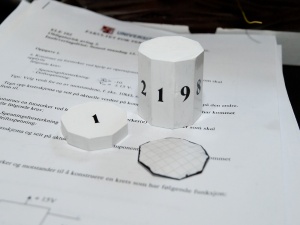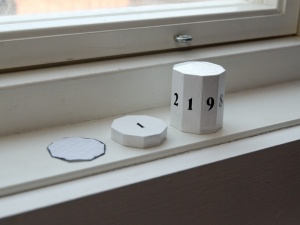Cylindrical Nonagon Dice: Difference between revisions
No edit summary |
No edit summary |
||
| (One intermediate revision by the same user not shown) | |||
| Line 1: | Line 1: | ||
[[Image:Dice_nonagon.png|150px|right]] | |||
For a statistic lecture I made a cylindrical nonagon dice, it has 9 sides excluding the two sides on each end of the cylinder. | For a statistic lecture I made a cylindrical nonagon dice, it has 9 sides excluding the two sides on each end of the cylinder. | ||
== Build == | == Build == | ||
Latest revision as of 12:24, 18 October 2009
For a statistic lecture I made a cylindrical nonagon dice, it has 9 sides excluding the two sides on each end of the cylinder.
Build
Wood piece
I used a short wood piece as a base for the dice. Aligning a print-out of the nonagon shape helped outline the shape.
Chipping away
Chipping small pieces away at a time eventually formed something that looked like a dice.
Using a rotary band sanding machine helped define the edges and smoothen the sides.
Painting
The dice should be white with black digits. I found a suitable hobby paint bottle. Using a aquarell-paintbrush helped distribute the paint over the surface. I applied 3 coats, sanding down the surface on the first two coats.
Digits
My father and a ring binder with all kinds of fonts in LetraSet form. It's essentially pre-printed fonts on a plastic sheet and can be applied to any flat surface using a round-pointy-tool, like a pencel.
Applying and aligning the digits took some practice and time, but I think it turned out pretty well.
Finish
To finish and protect the digits from being damaged, I applied a coat of varnish. The surface turned out gloosy and smooth.

